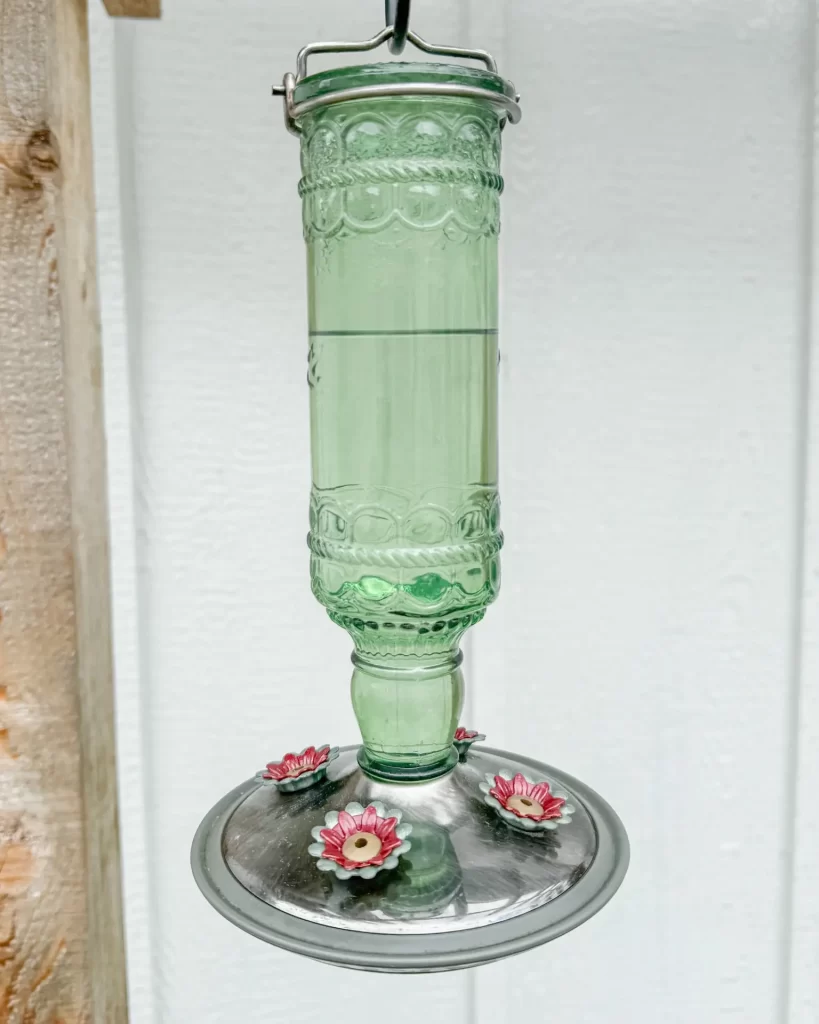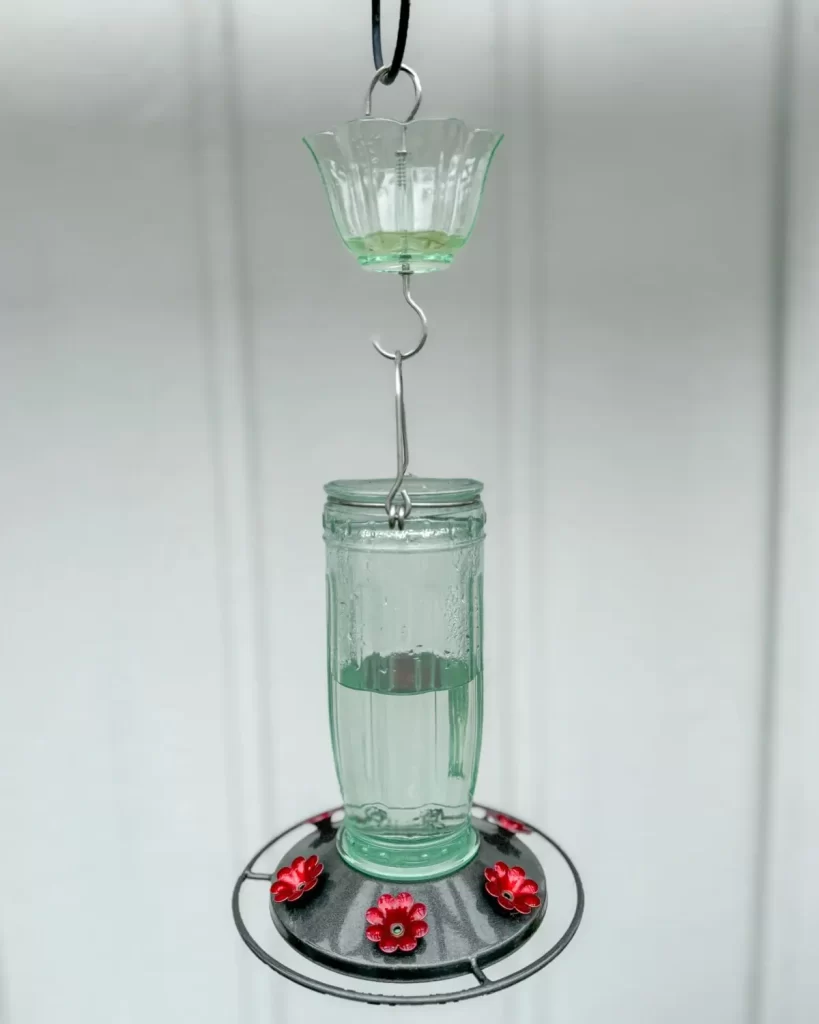Hummingbirds are some of the most delightful little visitors you can welcome into your yard. Their tiny size and dazzling colors are captivating. Their ability to hover is incredible. They zip through the air at what feels like 90 miles per hour. This makes them fascinating to watch! But did you know that these adorable birds rely heavily on food sources, especially during migration?
Adding a hummingbird feeder to your garden is a great way to support them. Trust me, it’s incredibly entertaining! I could watch them flit around my feeders for hours. Over the years, I’ve researched and tested all kinds of hummingbird feeders. Today, I’m sharing two of my absolute favorites. These feeders are affordable, easy to use, and work extremely well—I know because I own them both!
Choosing the Right Hummingbird Feeder
When picking out a hummingbird feeder, there are a few key things to consider:
1. Feeder Type
You’ll want to choose a feeder that fits your coastal, cottage, or garden aesthetic—but keep in mind, there are two main styles:
• Bottle feeders – Classic and decorative, often made of glass or plastic.
• Dish feeders – Compact and easy to clean, often with a lower profile.
Both have their advantages, so it really comes down to personal preference!
2. Capacity & Size
If it’s your first year attracting hummingbirds, you might not know how many will visit. I started with three feeders, just in case I had a flock show up at once! However, I prefer smaller feeders (around 2 cups of nectar capacity) because I change the nectar frequently.
3. Materials & Durability
Choose glass or sturdy plastic feeders that can withstand the weather and last for seasons to come. Glass tends to hold up better over time and is easier to clean.
4. Design & Visibility
Hummingbirds are drawn to bright colors, especially red. Choose a feeder with vibrant flower-shaped ports. This makes it easier for them to find. Clear nectar reservoirs help you monitor nectar levels.
5. Ant Moat & Bee Guards
Nothing ruins a hummingbird feeder faster than pesky ants or bees taking over! Look for feeders with built-in ant moats to keep the nectar fresh. Choose designs with bee guards to ensure it is available only to the birds.
My Top 2 Hummingbird Feeder Picks
After trying several, these are my personal favorites—they’re reliable, affordable, and the hummingbirds love them!
1. Kingsyard Glass Hummingbird Feeder
(Includes Ant Moat!).

[→ Click here to check it out on Amazon
as an amazon affiliate I earn from qualifying purchases, see my disclosure policy here
✅ Attractive Garden Design – 16 oz. glass container with six flower-shaped feeding ports
✅ Easy to Clean – Wide-mouth bottle design for quick refills and thorough cleaning
✅ Leakproof Function – Built-in durable gasket prevents spills
✅ Includes Ant Moat – Keeps pesky ants away from the nectar

✅ Perfect for Multiple Birds – Accommodates several hummingbirds at once
(A gorgeous vintage-style feeder with metal accents!)
✅ Beautiful Antique Design – Green glass bottle with a brushed nickel base
✅ Four Feeding Ports – Flower-shaped ports with perches for multiple birds
✅ Durable Construction – Thick glass bottle and weather-resistant metal base
✅ Easy to Clean – Bottle and base separate for quick cleaning
✅ 10 oz Capacity – Holds just the right amount of nectar
[→ Click here to shop this feeder on Amazon]
Homemade Hummingbird Nectar Recipe
While hummingbirds naturally feed on nectar-producing flowers, offering homemade sugar water is an excellent way to supplement their diet.
Ingredients:
• 1 part white granulated sugar
• 4 parts water
Instructions:
1. Boil the water to remove impurities.
2. Stir in the sugar until fully dissolved.
3. Allow the mixture to cool completely before filling your feeder.
4. Hang your feeder in a shaded area to prevent the nectar from spoiling too quickly.
⚠️ Important Notes:
• DO NOT use honey, brown sugar, or artificial sweeteners—they can be harmful to hummingbirds.
• Avoid red food coloring—most feeders already have red on them, and dyes aren’t necessary.
• Change the nectar every 3-4 days (even sooner in hot weather) to prevent mold and fermentation.
Enjoy the Magic of Hummingbirds!
Hummingbirds bring so much joy to my garden, and I eagerly await their return each year! If you’ve never set up a feeder before, now is the perfect time to start. Watching these tiny birds dart and hover is truly magical.
I’d love to hear about your experiences! Do you have a favorite hummingbird feeder? Have you had luck attracting them? Drop a comment below—I’d love to chat!
Ready to attract more hummingbirds?
Check out my recommended feeders and create a hummingbird-friendly oasis in your garden today!
[→ Shop my top picks on Amazon]
Final Thoughts:
This version makes your post:
✔ More structured and easier to read
✔ More engaging with better flow and conversational tone
✔ More helpful with added hummingbird care tips
Let me know if you’d like any tweaks!
